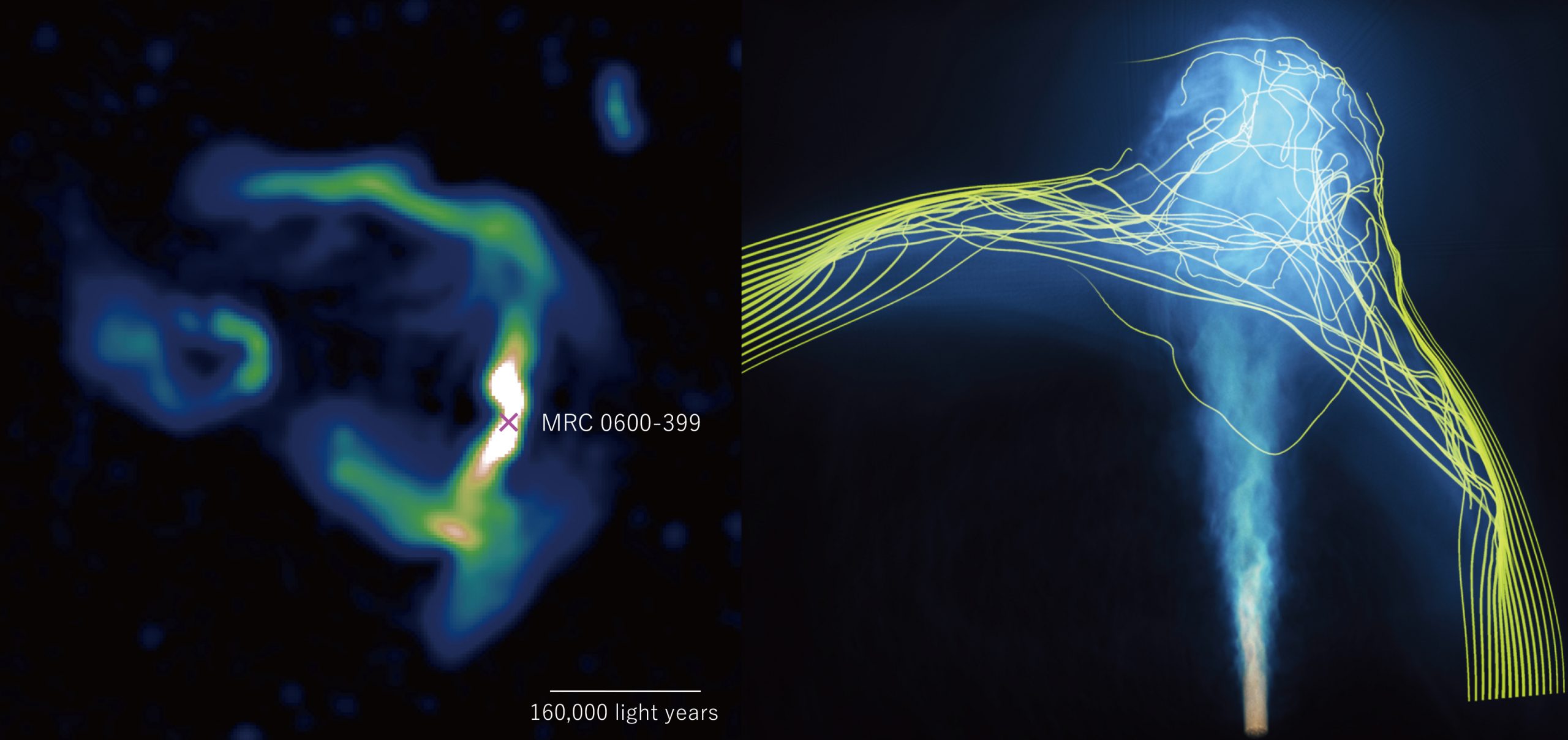How to make the invisible visible
Astronomers have a lot in common with forensic scientists. They infer from traces the events that might have led to the formation of these traces. They take photographs and look at what is visible of these events in order to then also be able to capture their invisible parts. Very much remains invisible in the universe: Black holes, dark matter or dark energy, which we all see only through their effects, are certainly the most prominent. But also magnetic fields play an important role. They provide the framework in which charged particles move in galaxies.
For example, when clusters of galaxies grow through collisions with the surrounding matter, they produce bow shocks and vortices in their rarefied plasma. The plasma motion caused by these activities can create magnetic layers within the galaxy clusters, forming virtual walls of magnetic force. However, these magnetic structures can only be observed indirectly if something interacts with them. However, because it is difficult to actually identify such interactions, astronomers do not yet truly understand the nature of magnetic fields within galaxy clusters. A new approach to mapping the magnetic fields would be very helpful.
New observations and simulations now show that jets of high-velocity particles emitted from the central black hole in the brightest galaxy in a galaxy cluster can do just that. These findings give astronomers a new tool to study previously unexplored aspects of galaxy clusters.
An international team of astronomers used the MeerKAT radio telescope in the northern Karoo Desert in South Africa to observe a bright galaxy in the merging galaxy cluster Abell 3376, known as MRC 0600-399. MRC 0600-399 is located more than 600 million light-years away toward the constellation Columba and is known to have unusual jet structures bent at a 90-degree angle. Previous X-ray observations revealed that MRC 0600-399 is the core of a subcluster that penetrates the main galaxy cluster, indicating the presence of strong magnetic layers at the boundary between the main cluster and the subcluster. These features make MRC 0600-399 an ideal laboratory to study the interactions between jets and strong magnetic layers.
The MeerKAT observations revealed unprecedented details of the jets. Most striking is a weak double-sense structure that extends in the opposite direction of the kinks, forming a T-shape. These new details show that this is a very chaotic collision, similar to a jet of water hitting a pane of glass. To explain the observed shape of the jets and the underlying magnetic field configuration, special computer simulations are needed, such as those performed by team member Takumi Ohmura on the ATERUI II supercomputer. The simulations assumed an arc-shaped, strong magnetic field and neglected details such as turbulence and the motion of the galaxy. This simple model provides good agreement with observations, suggesting that the magnetic field pattern used in the simulation reflects the actual magnetic field strength and structure around MRC 0600-399. More importantly, it shows that the simulations can generally successfully represent the underlying physics, so they can be applied to other objects to characterize more complex magnetic field structures in galaxy clusters. This offers astronomers a new way to understand the magnetic universe.
